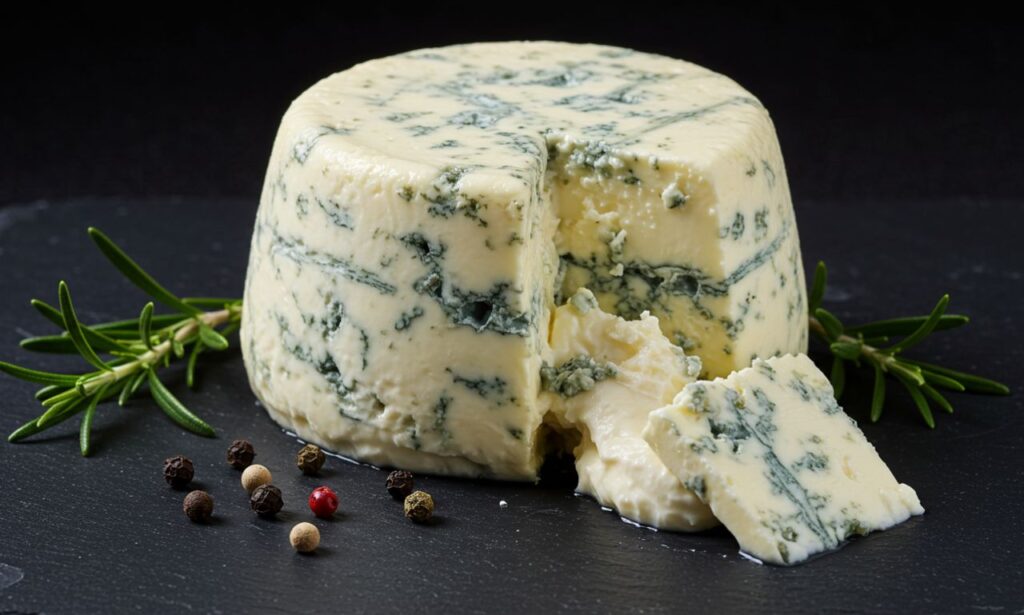In the world of gourmet cheese, where tradition and innovation often walk hand in hand, a modern fusion is taking the culinary scene by storm—Masgonzola. This unique hybrid combines two beloved Italian cheeses: the rich, buttery texture of mascarpone and the mildly pungent, blue-veined complexity of Gorgonzola Dolce. The result is a smooth, creamy spreadable cheese that brings sophistication without overwhelming intensity, making it ideal for both connoisseurs and newcomers to blue cheese.
Masgonzola is not just a product but a concept—a cheese blend that answers the call for balanced flavor and versatility. Whether featured on an artisanal charcuterie board, melted into a sauce, or whipped into a dessert, Masgonzola represents a perfect culinary compromise between boldness and softness. This article explores the origin, taste profile, culinary applications, and cultural significance of Masgonzola, and why it’s gaining ground as a modern favorite.
Masgonzola: The Essence of Fusion
What Is Masgonzola?
Masgonzola is a layered or blended cheese that brings together two distinctive dairy styles: mascarpone, known for its velvety, sweet creaminess, and Gorgonzola Dolce, a milder version of the iconic Italian blue cheese. This cheese isn’t part of any Protected Designation of Origin (PDO) like traditional Gorgonzola, making it a contemporary creation often crafted by artisanal cheesemakers or cheese enthusiasts at home.
While not an official product with centuries of heritage, Masgonzola reflects a broader trend in modern cheese-making—combining different styles to create new textures and flavors that appeal to evolving palates.
A Closer Look: Mascarpone and Gorgonzola Dolce
To understand Masgonzola, it’s essential to appreciate its building blocks.
-
Mascarpone is a soft, triple-cream cheese made from fresh cream coagulated with citric or acetic acid. It has a neutral, slightly sweet profile and a thick, luxurious texture. Mascarpone is best known as the key ingredient in tiramisu.
-
Gorgonzola Dolce, on the other hand, is a young, creamy blue cheese with a gentle tang. Aged for only 2–3 months, it has a soft texture and delicate blue veining, making it milder than the sharper Gorgonzola Piccante, which is aged longer and has a crumbly, bold taste.
Masgonzola takes the best of both worlds—the smoothness of mascarpone and the gentle bite of Gorgonzola Dolce—resulting in a creamy, rich, and slightly funky cheese that is both approachable and elegant.
Taste Profile: Masgonzola’s Unique Appeal
Texture
Masgonzola has a luscious, spreadable consistency. Unlike crumbly blue cheeses, it spreads easily on bread and melts beautifully in sauces. The mascarpone ensures a smooth body, while Gorgonzola’s mild blue veins add specks of character and contrast.
Flavor
-
Primary notes: Creamy, buttery, mildly tangy
-
Secondary notes: Earthy blue cheese sharpness, but not overpowering
-
Finish: Soft, lingering sweetness balanced by gentle mold
This combination makes Masgonzola a favorite for those who find traditional blue cheese too pungent but still want that depth of flavor.
Creative Culinary Applications of Masgonzola
1. Cheese Boards and Appetizers
Serve Masgonzola on crusty bread or water crackers with fig jam or truffle honey. Its creamy texture and mild tang make it a beautiful contrast to sweet or salty toppings.
2. Gourmet Pasta Sauces
Whisk Masgonzola into hot pasta or risotto at the finish for a luxurious, slightly tangy coating. Its smooth texture allows it to melt evenly without curdling.
3. Desserts with Depth
Blend Masgonzola with whipped cream or ricotta to create a decadent, savory-sweet base for cheesecake or mousse. Swirl into chocolate ganache for complex flavor.
4. Salad Dressings
Whip with olive oil, lemon, and herbs for a creamy, blue-cheese-inspired dressing that’s far milder than traditional Roquefort or Stilton-based options.
5. Pizza and Flatbreads
Use Masgonzola as a white pizza base, paired with mushrooms, caramelized onions, or pears. Its flavor profile brings richness without overpowering other toppings.
Pairing Masgonzola with Wine and Food
Masgonzola is extremely versatile in terms of pairing, thanks to its balanced flavor.
-
Wines: Pair with late-harvest whites, Moscato, Riesling, or even light reds like Pinot Noir. Dessert wines like Port or Sauternes also pair beautifully.
-
Fruits: Pears, apples, grapes, and figs highlight Masgonzola’s sweet and tangy notes.
-
Meats: Prosciutto, speck, or bresaola for salty contrast.
-
Breads: Sourdough, focaccia, or walnut-crusted baguettes offer texture and nutty flavor.
Making Masgonzola at Home
DIY enthusiasts can replicate Masgonzola by blending equal parts of mascarpone and Gorgonzola Dolce:
Basic Recipe
-
1 part Gorgonzola Dolce (crumbled)
-
1 part mascarpone (softened)
-
Optional: A drizzle of cream for smoother blending
Mix gently with a spoon or food processor until combined but not over-mixed. Refrigerate for 2–3 hours to let the flavors meld.
Storage and Serving Tips
-
Refrigeration: Keep Masgonzola tightly wrapped in parchment or wax paper, inside a plastic or glass container.
-
Shelf Life: Use within 7–10 days. Its high-fat content means it can spoil quickly if not stored properly.
-
Serving: Bring to room temperature for 30 minutes before use to enhance aroma and flavor
Cultural Relevance and Market Trend
While not protected like traditional Italian cheeses, Masgonzola reflects a new wave of global culinary trends:
-
Fusion Cuisine: Combines familiar and bold flavors for broader appeal
-
Gourmet Convenience: Ready-to-use, high-impact flavors in an easy form
-
Modern Palates: Appeals to younger consumers seeking flavor but less funk
Retailers in Europe and the U.S. now carry artisanal versions of Masgonzola, often from small creameries experimenting with new blends.
Conclusion
Masgonzola is more than a cheese—it’s a flavorful bridge between culinary tradition and modern innovation. With its velvety texture, approachable flavor, and surprising versatility, Masgonzola is an excellent addition to both simple meals and sophisticated menus. Whether you’re building an epic cheese board, crafting a pasta masterpiece, or reinventing dessert, this luxurious fusion deserves a spot in your kitchen.






